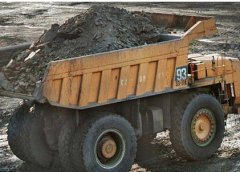By Adam Koscielak
Equipment maintenance is essential to keep up with the increased productivity demands of a mining operation. After 36 years in this industry, I’ve seen firsthand the many challenges operations managers face in surface and underground mines – from extreme hot and cold temperatures to excess debris and humidity. Experience has taught me that the lubricant you select can make a significant difference in keeping systems running efficiently, especially in harsh operating conditions.
Here are some common lubricant questions I’ve heard over the years:
I am under a lot of pressure to reduce expenses at my site. How can the lubricant I select help reduce my operating costs?
Reducing cost of production is a common goal of mine operators. You may be tempted to reduce costs by choosing the cheapest lubricant option and compromising on quality. Be careful about going this low-cost route and take a look at the bigger picture.
A higher-quality lubricant results in greater performance, leading to more uptime and reduced maintenance costs. In other words, look for a lubricant that can help you reduce operational expenses over the long term via extended drain or re-greasing intervals.
I recently received the results from my oil analysis and I have significant contamination in my system. Is the lubricant causing these issues?
When contamination occurs within equipment systems, many operations managers quickly assume their lubricant is at fault.
Typically, however, external factors are the culprit. Anything in a fluid that does not belong is a contaminant – this includes dirt, particles, air and water. In many cases, contamination results from improper storage and handling techniques.
Another example is cross-contamination as a result of using the wrong product. This can happen if someone is either unaware of the suitability of each product, or simply uses the wrong product out of convenience. Never assume “an oil is an oil” – each product has a specific use and shouldn’t be mixed with another product.
The bottom line is avoid contamination in your system through:
- Proper lubricant handling and storage.
- Ensuring the right product goes in the right place for maximum performance and cost efficiency.
The location and terrain of our mining operation makes it almost impossible to keep our equipment in good shape. How do I keep my oil clean if I can’t keep dirt out of my systems?
It’s tough to keep dirt out when you’re working in the challenging conditions of a mine.
Many operations managers may not realize that neglecting oil maintenance can lead to excessive amounts of dirt. In fact, the amount of particulates flowing through a hydraulic pump could equate to hundreds of pounds being circulated in the system each year.
That amount of dirt will reduce the efficiency and, over time, take down the hydraulic pumps. In fact, the single greatest opportunity for increasing component life and lowering operating costs is to effectively manage fluid cleanliness.
There are two key ways that particulate can get into a system.
1. The contaminant is generated within the system as a result of equipment wear. As these wear particles may be microscopic in size, oil analysis is beneficial to flag any issue.
2. The contaminant is introduced externally, such as airborne dirt and debris, as well as moisture. All lubricants need to be kept cool, clean and dry. Some other tips include starting with clean tanks, using proper filtration, high-efficiency breathers, proper labeling and oil-safe containers.
By keeping a system clean, you can:
- Optimize the life of the oil.
- Reduce the time and costs associated with oil change-outs.
- Increase the efficiency and longevity of your equipment.
I’m considering changing the type of lubricant we use in our mine, but I don’t know where to start. Do I need to use an OEM-approved product for every piece of equipment?
There is a lot to consider when selecting a lubricant for your equipment needs. Some key things to keep in mind are:
- Seasonality demand.
- Drain intervals.
- Machinery model/make.
- Consolidation opportunities.
At Petro-Canada Lubricants, we do the legwork to provide you with the proper fluid recommendation and best practices for each and every product we manufacture. Using an OEM-approved product is only necessary if you are looking to maintain specific warranties.
Adam Koscielak is a senior technical advisor for Petro-Canada Lubricants Inc. with more than 36 years’ experience helping customers with equipment technical expertise and product application knowledge. https://lubricants.petro-canada.com.

